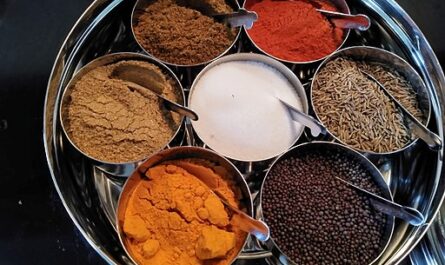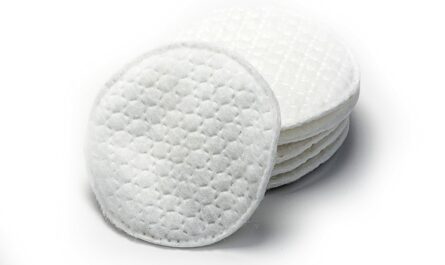The Luxury Upholstery Fabric has been growing steadily over the past decade. Luxury fabrics that were once reserved only for the wealthy are now becoming more accessible to mainstream consumers. Let’s take a deeper look at some of the key trends shaping this.
Emergence of New Designers and Fabrics
The luxury fabric has seen the emergence of many new and innovative designers in recent years. These designers are experimenting with new material blends, weaves, and finishes to create luxury fabrics unlike anything seen before.
Some examples include the use of rare exotic animal hairs blended with soft merino wool. Designers are meticulously sourcing unique hairs from alpaca, cashmere goats, and llamas to create sumptuous textures. These natural fiber blends are not only luxurious to touch but also more sustainable than synthetic options.
Other innovations include intricate jacquard weaves with raised designs and motifs. Advanced looms are enabling intricately detailed patterns that would be nearly impossible to achieve through traditional weaving methods.
Designers are also experimenting with unique fabric finishes like antiquing, shimmering, and distressing. These finishing techniques age the fabrics to look worn over time while also adding subtle visual interest. The end result is fabrics that have one-of-a-kind textures and vintage appearances.
Luxury Fabrics Go Green
There is a growing demand from consumers for more sustainable luxury fabric options. Major designers are responding by launching lines made from eco-friendly materials.
Some designers have started using recycled fibers like recycled polyester and nylon. These fabrics look and feel identical to their virgin counterparts but are better for the planet. Traceable and recycled materials allow consumers to make eco-conscious purchase decisions.
Other popular sustainable materials include organically grown cotton and natural alternatives like bamboo, soy, and linen. Natural dyes and low-impact production methods are also gaining popularity.
The increased use of sustainable practices has helped luxury fabric producers maintain premium quality while reducing environmental footprints. Many manufacturers now publish detailed sustainability and traceability reports to appeal to ethically-minded buyers.
Accessibility of Luxury Fabrics
Over the past decade, luxury fabrics have increasingly become more accessible to a broader range of consumers. Advances in manufacturing technologies have enabled mass production of even the most intricate designs.
The widespread adoption of cut-and-sew automation along with lean manufacturing practices have brought down production costs significantly. This allows designers to offer luxurious fabrics at more affordable price points.
Online retail has also played a major role in enhancing accessibility. Websites offer a wide variety of luxury upholstery fabrics directly shipped to customers’ doorsteps. This eliminates layers of traditional retail margins and brings luxury within reach of more budget-conscious buyers.
Emerging onlineplaces allow small-batch producers and artisans to sell their fabrics globally. Customers now have access to locally-produced and unique luxury fabric finds from all corners of the world.
The democratization of formerly exclusive fabrics has helped expand the luxury upholstery into new geographic regions and demographic segments. What was once a niche has transformed into a worldwide phenomenon.
Sourcing and Production Hubs
Several regions around the world have emerged as hubs for luxury fabric sourcing and production. Let’s explore some of the major international hubs.
Italy – With a rich textile tradition spanning centuries, Italy is considered the epicenter of luxury fabrics in Europe. Major designers source the finest natural fibers and employ skilled artisans to produce one-of-a-kind creations. Key cities include Milan, Florence and Vicenza.
India – India’s craftsmanship coupled with access to diverse raw materials have cemented its position as a top sourcing destination. The states of Gujarat and Rajasthan specialize in intricate embroidery, block printing and handlooms.
Turkey – Located at the crossroads of Asia and Europe, Turkey produces high-quality wool, mohair and cashmere. The cities of Bursa and Gordes are famous for their textile bazaars and specialty producers.
China – Advanced manufacturing capabilities and a large skilled workforce have made China the world’s largest luxury fabric producer. Major hubs include Shanghai, Shenzhen and Guangzhou.
The United States – Domestic production is rebounding with sustainability and traceability at the fore. New York and California house innovative producers focused on natural materials.
This network allows designers access to the finest raw materials and artisanal techniques from around the world. It has played a key role in the ongoing innovation and growth of the luxury upholstery.
Rising Demand from Emergings
Demand for luxury home textiles has grown significantly in emerging economies like China, India, Brazil and the Gulf states over the past decade.
Rising incomes have brought formerly out-of-reach luxury brands and designer labels within easy reach of many. At the same time, evolving cultural attitudes view conspicuous displays of luxury fabrics as symbols of prestige and status.
Real estate developers in these regions focus on building upscale housing and hotels to meet the growing demand. They feature lavish interiors with imported luxury fabrics driving up international sales.
Leading brands have responded by opening flagship stores and showrooms in key urban hubs to woo newly-moneyed customers. Targeteding with regionally inspired designs have also driven brand adoption among luxury-aspiring social groups.
Looking Ahead
All signs point to continued growth of the luxury upholstery fabric in the coming years. Factors like ongoing innovation, enhanced accessibility, sustainable materials and demand from emergings are fueling this expansion.
The pandemic has also accelerated long-term trends like working from home and e-commerce that will keep demand for premium home fabrics elevated. Luxury brands are sure to capture greater share by developing specialized regional collections and diverse retail channels.
With skilled artisans across the world pushing the boundaries of creativity and technology making luxury available to more people than ever, this’s best years may still be ahead. Immersive digital experiences and new frontiers like interior health materials open up exciting future possibilities as well. The luxury fabric is primed for ongoing transformation and growth worldwide.
*Note:
1. Source: CoherentMI, Public sources, Desk research
2. We have leveraged AI tools to mine information and compile it




